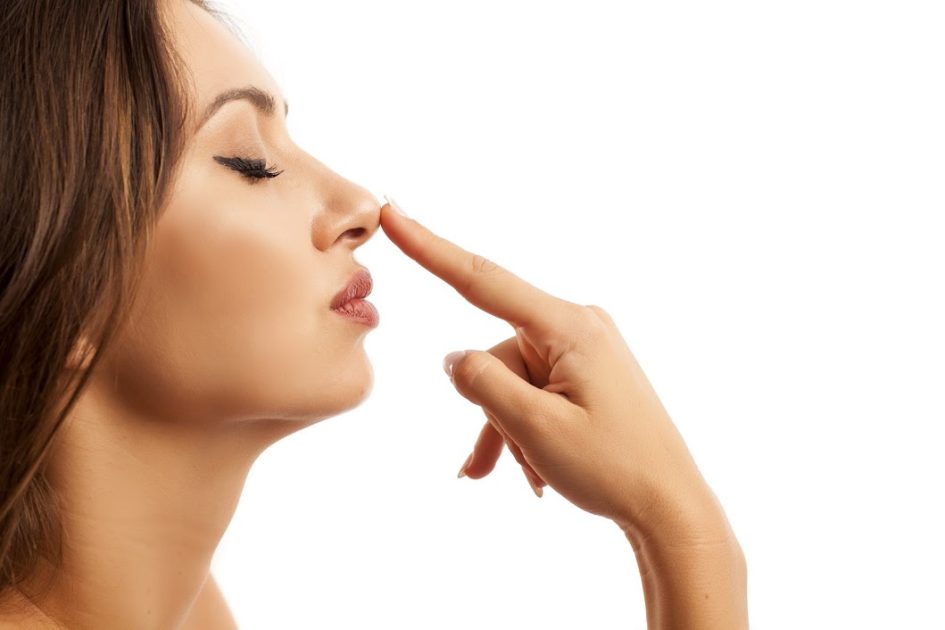Taping is a common practice after rhinoplasty, and it is often recommended by rhinoplasty surgeons to help support the  healing process and optimize the final results. Taping is theoretically done to provide additional support to the nasal tissues, minimize swelling, and help shape the nose during the initial stages of recovery. However, it is not beneficial to all patients, and it may actually cause harm if done incorrectly. Purported benefits include:
healing process and optimize the final results. Taping is theoretically done to provide additional support to the nasal tissues, minimize swelling, and help shape the nose during the initial stages of recovery. However, it is not beneficial to all patients, and it may actually cause harm if done incorrectly. Purported benefits include:
- Reduced Swelling: Taping can help minimize postoperative swelling by applying gentle pressure to the nasal tissues. This pressure can encourage fluids to drain away from the surgical site.
- Support Nasal Tissues: Taping provides support to the newly shaped nasal structures. It helps maintain the desired shape and alignment of the nose during the early stages of healing.
- Control Edema: Edema, or fluid retention, is common after surgery. Taping can help control and reduce edema, contributing to a smoother recovery.
- Prevent Scar Tissue Formation: Taping may help prevent the formation of excessive scar tissue by keeping the skin and underlying tissues in place and minimizing tension. This is particularly important after large reductions in size or rearrangements of cartilage. Otherwise, one may develop issues like Pollybeak Deformity.
Who is a Good Candidate for Taping After Rhinoplasty?
Not all patients actually benefit from taping after rhinoplasty. A Randomized Controlled Trial published in JAMA Facial Plastic Surgery in 2016 by Ozucer and associates studied 57 patients undergoing rhinoplasty. Three groups were allocated: One control group(no taping) and two taping groups(2 weeks and 4 weeks of taping). The desired outcome was a difference in edema and tissue thickness due to the taping. The study concluded that taping had no effect in thin skinned patients, but was effective in reducing tissue thickness in thick skinned patients. This translates into a smaller nose overall, less chance at pollybeak deformity, and better definition of the tip(cuter tip with ski slope or button).
How Does One Go About Taping After Rhinoplasty?
Taping
• Only use the allocated taping approved by your physician(Usually 3M 0.5 inch flesh colored micropore paper tape).
• Stay nasal taped “as many hours as is socially feasible,”
especially at night.
• Before applying the tape, make sure to clean your nasal skin with
an alcohol pad.
• Place your taping in front of a mirror for proper placement. Apply
horizontally oriented, single-layer taping—as you were instructed—
from top to tip. Do not overlap the tapes more than 2%.
• Pull the tape tightly on the skin; the idea is to compress the skin
down to underlying cartilage and/or bone.

Untaping
• Before peeling off, contact with water or alcohol (during shower
or after washing your face).
• Pull the tape gently back over itself 180 degrees to minimize
pulling the skin up.
• Make sure to wash your nose skin 2 to 3 times a day.
Choose a Rhinoplasty Expert?
It is important that you choose a Plastic Surgeon experienced in rhinoplasty surgery. Rhinoplasty surgery is a field all in itself. It is considered by many Plastic Surgeons to be the most difficult of all procedures. To be proficient in rhinoplasty requires a very specific skill set and a prolific knowledge of rhinoplasty techniques. It is a finesse surgery that takes time and a commitment to perfection. Patients should be wary of any surgeon who simply does an “add on” rhinoplasty at the time of septoplasty. Excellent rhinoplasty results take 3-4 hours to achieve.
Dr. David Graham is a rhinoplasty expert. He is a member of the both the American Rhinoplasty Society and Rhinoplasty Society of Europe. He has pursued advanced training with the world’s finest rhinoplasty surgeons, such as Dean Toriumi, Rod Rohrich, Mario Ferraz, and Rick Davis. In addition to traveling all over the US to hone his craft, he has traveled to Italy and Germany to study with the world’s best surgeons. As a result, he is at the forefront of rhinoplasty techniques, including the usage of ultrasonic rhinoplasty. He performs both primary and revision rhinoplasty procedures out of his state of the art surgical suite.
Contact Board Certified Plastic Surgeon, David Graham, MD, in Rochester, New York
To learn more about the plastic surgery treatments and procedures performed by Board Certified Plastic Surgeon, David Graham, MD please contact us.
View our plastic surgery and med spa procedure pricing.
Dr. Graham receives patients from Rochester, Victor, Fairport, Pittsford, Brighton, Irondequoit, Henrietta, Syracuse, Buffalo, New York and surrounding areas.


